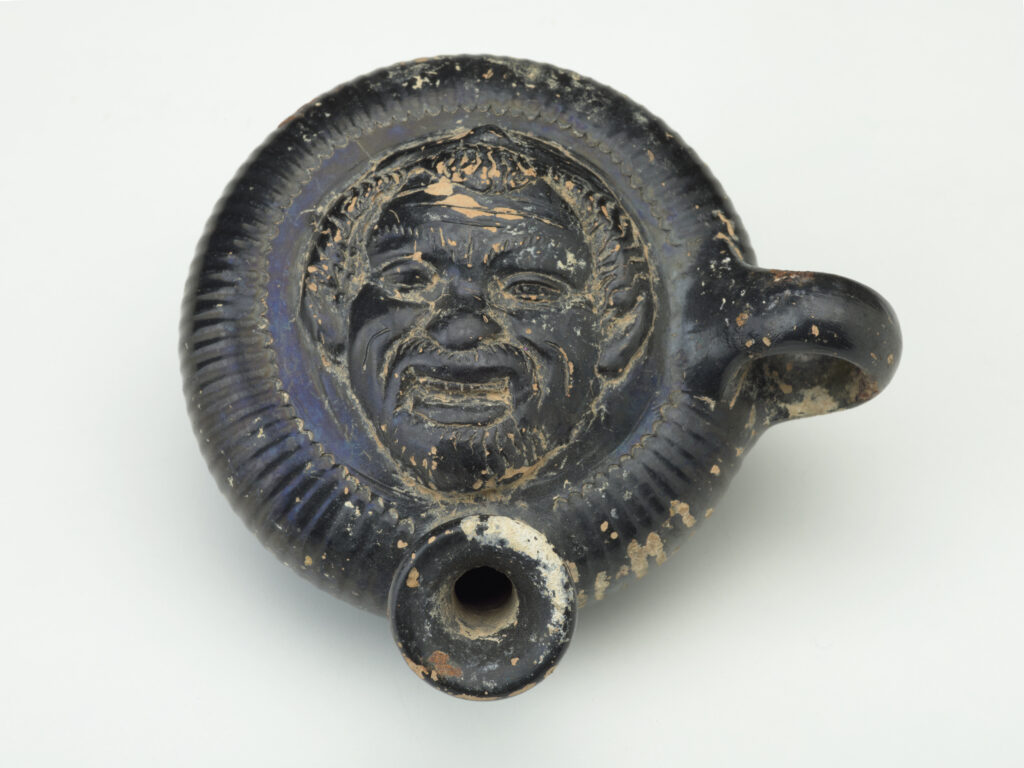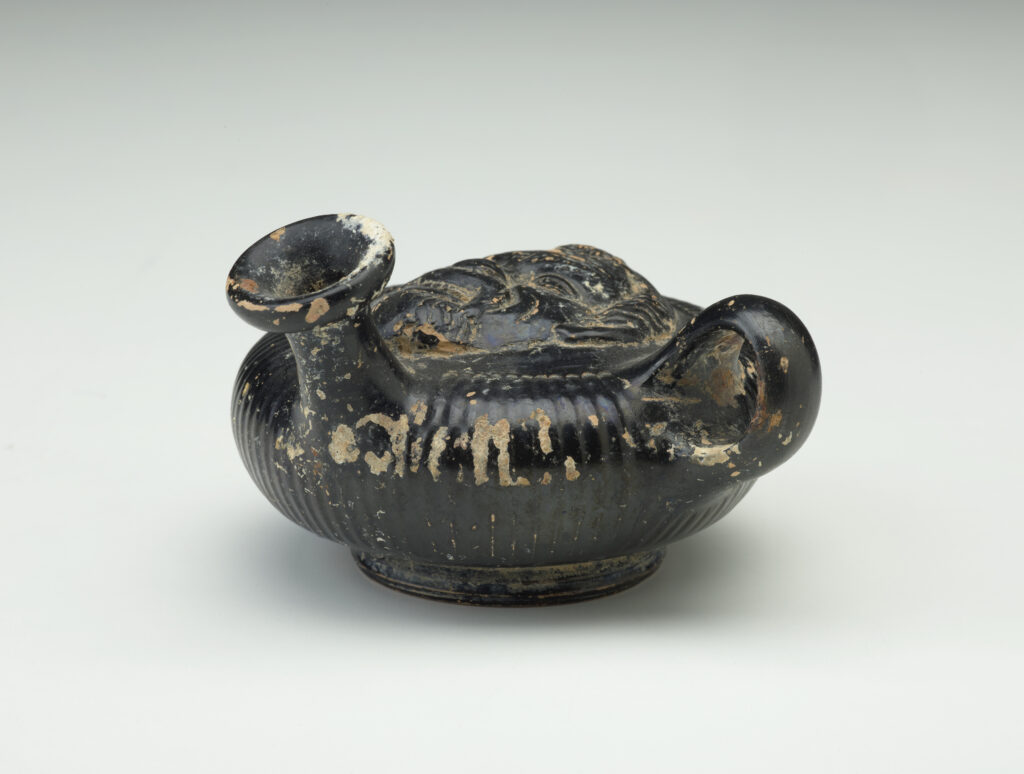Guttus (work of art)
Artwork Info
About
Key Ideas
- A guttus is a small, black-glazed pouring vessel or flask with a narrow spout. The spout is designed to pour only a few drops of liquid (such as wine, oil, water, honey, or vinegar) at a time.
- This guttus has a ribbed body, a narrow spout, and a handle. Decorative motifs were often included on the top of a guttus. This one features the image of a man’s face.
- Gutti (the plural form of guttus) have been found mainly in southern Italy. These vessels were often used in funeral-related rituals, at the table, for bathing, or in the gymnasium.
Learn More
This guttus is a black-glazed ware, which is a style of ancient Greek pottery. The term “black-glazed” refers to pottery that has been covered in shiny black slip, or liquified clay that turned a glossy black color when it was fired in a kiln. This vessel was either made using a potter’s wheel or it was pressed into a clay mold.
The exact way in which this vessel was used is unknown. Its spout and mouth indicate that it was used to store and pour liquid, probably vinegar or honey, in small amounts. It also could have been used to refill oil lamps, which were a main source of indoor lighting. The shape of this guttus would have produced an irregular flow of liquid. This means that it may have been created for use as a funerary object (and buried with a deceased person) rather than used as a household item.
Additional Resources
Resources for Teachers:
- View a similar vessel at the British Museum.
- View another terracotta guttus at the Metropolitan Museum of Art.
- Watch a video about ancient Greek black-glazed pottery.
Resources for Students:
- View another vessel at the Metropolitan Museum of Art.
- View another guttus at the Art Institute of Chicago.
- Watch a video to learn more about black glaze pottery from ancient Greece.


